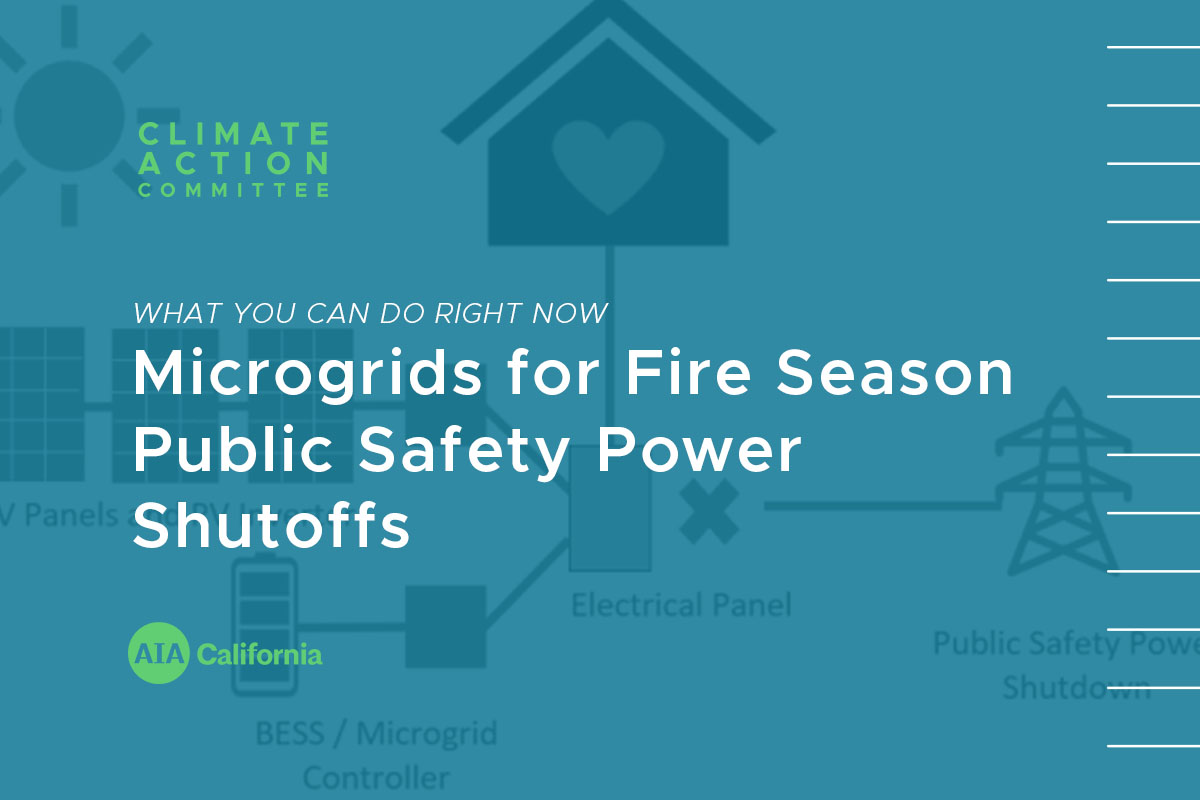
California and other western states are experiencing an increase in wildfire risk and longer wildfire seasons. Heat and drought conditions combined with high winds can cause energized lines to spark and start a wildfire. In November of 2018, California experienced their deadliest wildfire in history, known as the Camp Fire and caused by a faulty power line; the fire killed 85 people, destroyed 18,804 buildings and at $16.65 billion, was the costliest natural disaster in the world in 2018.
While not addressing protection from an actual wildfire, this article addresses a condition that results from the threat of wildfire: Public Safety Power Shutoffs (PSPS), which affect hundreds of thousands of residents of California each year. When wildfire-conducive weather conditions occur, utilities preemptively turn off power to reduce the risk of starting a wildfire, based on actual or expected wind conditions. California has seen an increasing number of PSPS events as utility companies try to reduce the risk of forest fires caused by their power lines. From 2013-2016, there was an average of one PSPS event per year. In 2017, that number jumped to 5, then 7 in 2018, 15 in 2019 and 20 in 2020. The median length of a PSPS is 42-44 hours, with 10% lasting more than 3.8 days. This results in millions of dollars of lost productivity, spoiled food, and a threat to the safety of those dependent on electrically operated equipment such as home medical ventilators.

Key features of PSPS are:
Responses to the growing number of and losses related to PSPS have been to provide onsite access to standby power to a building in the event of a PSPS. Although small gasoline-powered generators for residences and larger diesel generators for businesses can address this problem, both entail burning fossil fuels which add to the global warming problem that has exacerbated wildfires.
A greener option is to install an onsite lithium-ion battery energy storage system coupled to an PV system to form what is called a “PV/battery microgrid”. “A microgrid is a local energy grid with control capability, which means it can disconnect from the traditional grid and operate autonomously.” https://www.energy.gov/articles/how-microgrids-work A PV/battery microgrid can provide a source of standby power using smart building controls to balance the stored energy plus PV production against a building’s energy use, allowing critical components of an electrical system or potentially an entire building to continue running for the duration of a PSPS.
PV/battery microgrids can be small enough to serve a single-family residence or large enough to run a commercial office or even multiple buildings on a campus. There are even utility scale versions of microgrids, but for the purpose of this article, the size is limited to a single building or campus with a single owner. A simple version of a PV/battery microgrid would be the growing number of Tesla Powerwalls that have been installed with PV in homes throughout California that have the ability to “island” (i.e., disconnect from the grid and provide power to a home during a utility outage) as well as recharge using solar energy from the PV. An example of a larger campus microgrid can be found at Blue Lake Rancheria https://schatzcenter.org/blrmicrogrid/. Sophisticated systems can automatically charge to 100% when a PSPS is announced, automatically disconnect from the grid and restart providing power to the building when grid power is shut down, and automatically monitor the state of charge of the battery and adjust loads accordingly while the event is in progress. Since utility companies provide warning of an impending PSPS, microgrid owners can also use their batteries to manage their maximum demand and the time of use of grid energy when no PSPS is imminent and reduce their utility bills.